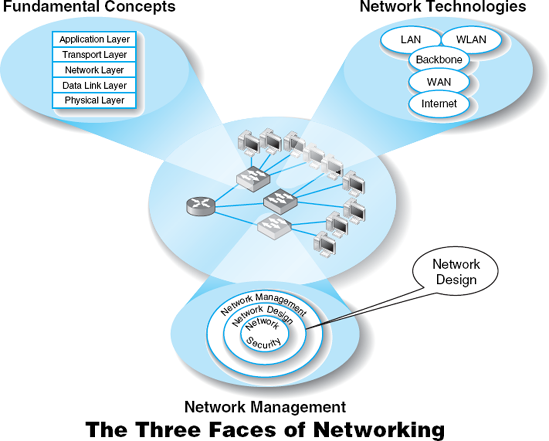Chapter 12. NETWORK DESIGN

NETWORK MANAGERS perform two key tasks: (1) designing new networks and network upgrades and (2) managing the day-to-day operation of existing networks. This chapter examines network design. Network design is an interative process in which the designer examines users' needs, develops an initial set of technology designs, assesses their cost, and then revisits the needs analysis until the final network design emerges.
OBJECTIVES ▾
Be familiar with the overall process of designing and implementing a network
Be familiar with techniques for developing a logical network design
Be familiar with techniques for developing a physical network design
Be familiar with network design principles
Understand the role and functions of network management software
Be familiar with several network management tools
CHAPTER OUTLINE
INTRODUCTION
The Traditional Network Design Process
The Building-Block Network Design Process
NEEDS ANALYSIS
Geographic Scope
Application Systems
Network Users
Categorizing Network Needs
Deliverables
TECHNOLOGY DESIGN
Designing Clients and Servers
Designing Circuits and Devices
Network Design Tools
Deliverables
COST ASSESSMENT
Request for Proposal
Selling the Proposal to Management
Deliverables
DESIGNING FOR NETWORK PERFORMANCE
Managed Networks
Network Circuits
Network Devices
Minimizing Network Traffic
IMPLICATIONS FOR MANAGEMENT
SUMMARY
INTRODUCTION
All but the smallest organizations ...
Get Business Data Communications and Networking now with the O’Reilly learning platform.
O’Reilly members experience books, live events, courses curated by job role, and more from O’Reilly and nearly 200 top publishers.

